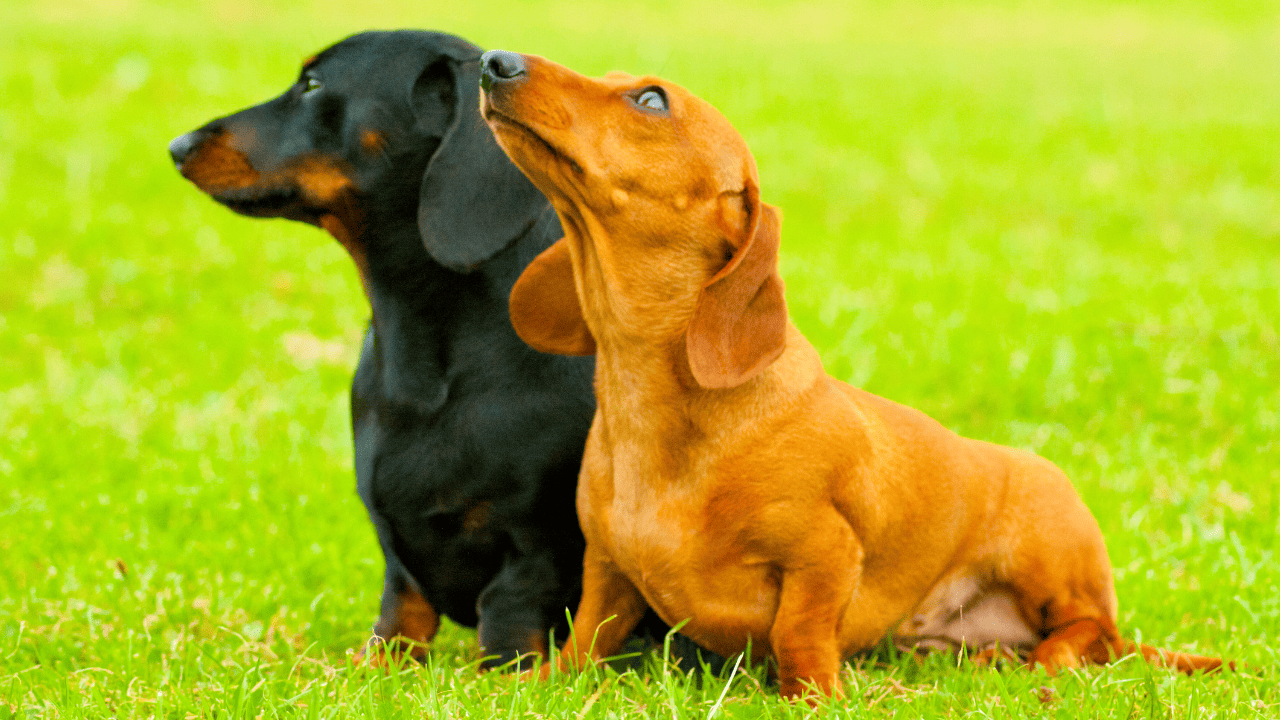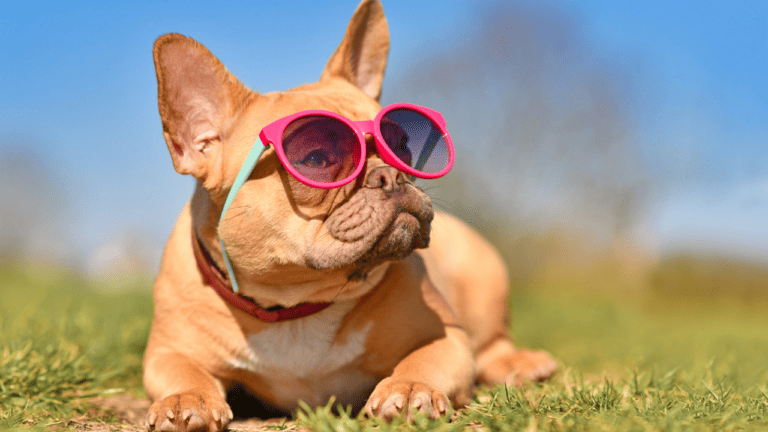Amazing Dachshund: Immersing Yourself In Their Lovely World

Introduction
Welcome to the enchanting world of Dachshunds, where boundless energy, distinctive charm, and undeniable loyalty converge in one delightful package. In this comprehensive blog post, we embark on a journey to unravel the unique allure of these lovable wiener dogs. From delving into their intriguing history to exploring the distinct characteristics that make them stand out in the canine kingdom, we’ll traverse the fascinating landscape of these lovely four legged companion.
Whether you’re a proud owner, a prospective pet parent, or simply captivated by the charm of these long-bodied companions, join us as we delve into their playful world, providing insights into their history, traits, care tips, and answering commonly asked questions. Get ready to fall head over heels for their irresistible charm & Delight.
Table of Contents
Overview
The Dachshund, often affectionately referred to as the “wiener dog” or “sausage dog,” is a breed that captures hearts with its distinct appearance and vivacious personality. Originating in Germany, their name translates to “badger dog,” reflecting its historical role as a skilled hunter of burrowing animals. With their exceptional scenting abilities and tenacious spirit, these dogs quickly gained popularity among hunters. This breed’s distinctive long body, short legs, and expressive eyes contribute to its iconic silhouette, making them easily recognizable and utterly endearing.
Brief History and Origins
Dating back to the 15th century, Dachshunds were initially bred for their remarkable digging and tunneling abilities, allowing them to pursue prey into underground burrows. This specialized skill set made them particularly adept at hunting badgers, a task that required courage, determination, and agility. Over the years, they evolved into versatile hunting dogs, adept at chasing various game, including rabbits and foxes.
The breed gained international popularity during the 19th century, earning a place in the hearts of dog lovers across Europe and beyond. Queen Victoria’s fondness for them further propelled their popularity in Victorian England, solidifying their status as cherished companions. The American Kennel Club (AKC) officially recognized them in 1885, marking a milestone in the breed’s journey to becoming a beloved household pet.
Despite their diminutive size, they carry a rich history that blends nobility, hunting prowess, and companionship. Today, these lovable wiener dogs continue to captivate dog enthusiasts worldwide with their spirited personalities and distinctive appearance, embodying a perfect blend of history, charm, and devoted companionship.
Popularity and Cultural Significance
Dachshunds have won the affection of canine enthusiasts across the globe. Their unique appearance and delightful personalities have earned them a special place in popular culture. From being featured in movies like “The Secret Life of Pets” to being iconic mascots for various brands, they have truly become cultural icons.
If you want to explore all the dog breeds you can have a read here
Physical Characteristics and Varieties
Dachshunds are easily distinguishable by their distinctive body structure and come in a variety of coat types and colors. Let’s explore their physical characteristics and their different types
Distinctive Body Structure
- Elongated Body and Short Legs: Their elongated body allows them to maneuver through underground tunnels and burrows with ease. Their short legs, though seemingly unconventional, are an integral part of their design, aiding in their hunting prowess.
- Muscular Chest and Compact Build: Despite their small size, they boast a muscular chest and compact build, enhancing their agility.
- Varied Coat Types and Colors: They come in an array of coat types, including smooth, wirehaired, and longhaired. Additionally, their coats can showcase a wide range of colors, from red and black to cream and dappled patterns.
Different Types
- Standard: The standard Dachshund is the original and most common variety. They typically weigh between 16 and 32 pounds and stand approximately 8 to 9 inches tall at the shoulder.
- Miniature: Miniature Dachshund are smaller in size, weighing no more than 11 pounds. Despite their diminutive stature, they possess the same charming personality as their standard counterparts.
- Toy: Toy Dachshunds, as their name suggests, are the tiniest of the breed. These pint-sized pups weigh around 8 pounds or less, making them perfect companions for those seeking a pocket-sized canine companion.
Temperament and Personality Traits
Dachshunds are known for their distinct temperament and unique personality traits. Let’s delve into their independent nature, courageous attitude, and loyal companionship.
Independent Nature and Courageous Attitude
- Hunting Instincts and Alertness: They possess a strong hunting instinct ingrained in their DNA. Their alertness and determination make them excellent watchdogs, always on the lookout for potential threats.
- Confidence and Fearlessness: Despite their small size, they exude confidence and fearlessness. They approach life with an undeterred spirit, unafraid to take on challenges.
- Need for Mental Stimulation and Socialization: Due to their intelligent nature, they thrive when mentally stimulated. Engaging them in activities such as puzzle toys and training sessions helps channel their energy and prevents boredom. Additionally, proper socialization is crucial to ensure they develop into well-rounded canine citizens.
Affectionate and Loyal Companionship
- Family-Oriented and Kid-Friendly: They thrive in a loving family environment. They form strong bonds with their human companions and are often adored for their affectionate nature. When raised with respect and taught gentle play, they can be wonderful companions for children.
- Dachshunds with Other Pets: With proper socialization from an early age, they can coexist harmoniously with other pets, including cats and dogs. However, it’s essential to supervise their interactions and introduce them gradually to ensure compatibility.
- Separation Anxiety and Loneliness: Dachshunds form deep attachments to their families and may experience separation anxiety if left alone for extended periods. They thrive when surrounded by their loved ones and may benefit from activities that alleviate their anxiety, such as interactive toys or the company of another compatible pet.
A special ebook to help you train your pet. If interested click here
Care and Maintenance
Taking care of a Dachshund involves fulfilling their exercise and activity needs, as well as keeping up with their grooming requirements.
Exercise and Activity Requirements
- Adequate Exercise to Prevent Obesity: Dachshunds are prone to weight gain, so regular exercise is vital to maintain their physical health. Aim for at least 30 minutes of activity per day, such as brisk walks or play sessions.
- Physical Activities Suitable for Dachshunds: While they may not excel in long-distance running, they enjoy activities that cater to their hunting instincts, such as scent work and agility training. Playing fetch or engaging in interactive games also keep them mentally stimulated.
- Mental Stimulation and Puzzle Toys: They possess a sharp mind, and mental stimulation is crucial to their overall well-being. Puzzle toys and treat-dispensing toys are excellent tools to challenge their intellect and provide entertainment.
Grooming and Coat Care
- Brushing and Bathing Dachshunds: Different coat types require varying degrees of grooming. Smooth-coated Dachshunds are low-maintenance and only require occasional brushing. Wirehaired and longhaired they benefit from more regular brushing to prevent matting. Bathing should be done as needed, using a gentle dog shampoo.
- Regular Nail Trimming and Ear Cleaning: Keeping your Dachshund’s nails trimmed is essential for their comfort and mobility. Additionally, their long, droopy ears require regular cleaning to prevent infections.
- Dental Care and Oral Hygiene: Dental health is crucial for Dachshunds. Regular brushing with a canine toothbrush and toothpaste helps maintain their oral hygiene. Additionally, providing dental chews or incorporating dental-friendly treats into their diet can aid in reducing plaque buildup.
Health Issues and Common Concerns
Like any breed, Dachshunds are prone to certain health issues that owners should be aware of. However, with proper preventive measures and regular veterinary check-ups, many potential problems can be mitigated.
Common Health Problems
- Back Problems and Intervertebral Disc Disease: The elongated spine of Dachshunds puts them at risk of back issues, including intervertebral disc disease. Owners should take extra precautions to prevent vigorous activities that could strain their backs.
- Obesity and Weight Management: Dachshunds have a propensity to gain weight, increasing the risk of various health issues. Monitoring their diet, providing appropriate portion sizes, and engaging in regular exercise are crucial to maintaining a healthy weight.
- Eye and Ear Issues: Dachshunds are more susceptible to certain eye conditions, such as progressive retinal atrophy and dry eye. Regular eye examinations can help detect and treat these issues early on. Additionally, their long, droopy ears are prone to infections, requiring diligent cleaning and regular check-ups.
Preventive Measures and Regular Veterinary Check-ups
- Proper Diet and Nutrition: Feeding your Dachshund a balanced diet appropriate for their age, weight, and activity level is essential. Consult with your veterinarian to determine the best diet plan for your furry friend.
- Regular Exercise and Weight Control: Preventing obesity in Dachshunds is vital for their overall health and longevity. Maintaining an active lifestyle and monitoring their weight can significantly reduce the risk of various health problems.
- Early Detection and Treatment of Health Issues: Regular visits to the veterinarian, along with prompt attention to any signs of discomfort or illness, can ensure early detection and appropriate treatment of potential health issues.
Frequently Asked Questions (FAQs)
Let’s address some of the common questions that arise when considering the Dachshund breed.
What is the average lifespan of a Dachshund?
The average lifespan of a Dachshund can range from 12 to 16 years, depending on various factors such as genetics, diet, exercise, and overall care.
Are Dachshunds suitable for first-time dog owners?
While they possess endearing qualities, their independent nature and hunting instincts require an experienced and committed owner. First-time dog owners should carefully consider whether they have the time, resources, and knowledge to provide adequate care and training for a Dachshund.
Do Dachshunds get along well with children?
Dachshunds can form strong bonds with children when properly socialized and introduced from an early age. However, it’s crucial to supervise interactions between dogs and young children to ensure the safety of both parties.
How much exercise does a Dachshund need?
Dachshunds require regular exercise to maintain their physical and mental well-being. A minimum of 30 minutes of activity per day, along with mental stimulation and interactive games, is recommended for their overall health.
Are Dachshunds prone to separation anxiety?
Dachshunds thrive on companionship and are prone to developing separation anxiety if left alone for extended periods. Owners should implement measures to alleviate separation anxiety, such as gradually increasing alone time and providing them with engaging activities or the company of another compatible pet.
Conclusion
Dachshunds, with their unique physique, vibrant personalities, and unwavering loyalty, have carved a special place in the hearts of dog lovers worldwide. Understanding their history, characteristics, care, and health is crucial for providing them with the love and attention they deserve. By embracing responsible ownership and appreciating their unique qualities, we can forge a deep bond and enjoy a fulfilling life with these lovable wiener dogs.
Remember, owning a Dachshund is a joyful responsibility. Embrace the journey, cherish the moments, and relish every wag of their delightfully short tail!







